![]()
![]()
![]()
Use LEFT and RIGHT arrow keys to navigate between flashcards;
Use UP and DOWN arrow keys to flip the card;
H to show hint;
A reads text to speech;
44 Cards in this Set
- Front
- Back
- 3rd side (hint)
|
Periosteal Reaction
- - - - - |
Periosteal Reaction
- Smooth - Lamellar - Spiculated/Palisading - Sunburst - Amorphous |
|
|
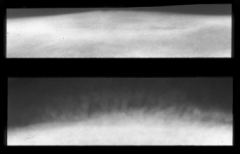
-
- |
- Smooth
- Palisading |
|
|
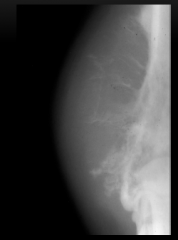
|
Amorphous/Sunburt Periosteal reaction
very aggressive |
|
|
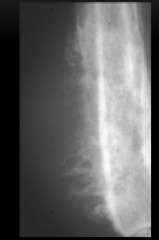
|
Sunburst/Spiculated Periosteal Reaction
very aggressive |
|
|
|
Pattern of Bone Destruction
- - - - |
Pattern of Bone Destruction
- Geographic, cortices intact - Permeative - Moth Eaten - Cortical Destruction |
|
|
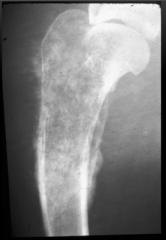
|
Permeative Lysis
Aggressive |
|
|
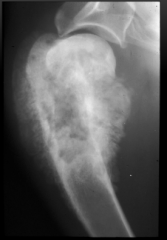
|
Permeative Lysis
Aggressive |
|
|
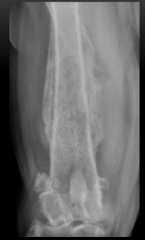
|
moth eaten lysis
aggressive |
|
|
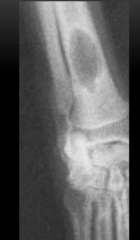
|
geographic lysis
|
sharp margins
benign or aggressive |
|
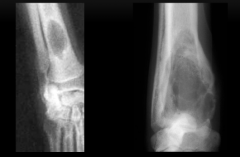
-
- |
- benign bone cyst
- osteosarcoma |
|
|
|
Zone of Transition
|
zone between normal and abnormal bone
short <2 mm intermediate 2-5mm long >5 mm |
|
|
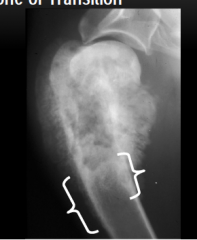
|
long zone of transition
|
aggressive
permiative lysis |
|
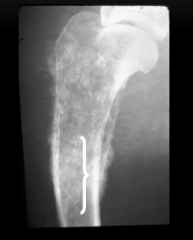
|
long zone of transition
|
aggressive
permeative lysis spiculate/amorphus periosteal rxn |
|
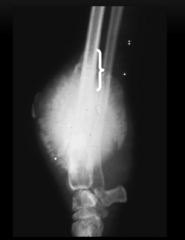
|
long zone of transition
|
aggressive
spiculated/sunburst periosteal rxn |
|
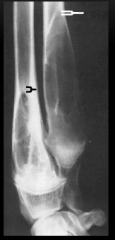
|
short zone of transition
|
benign (usually)
|
|
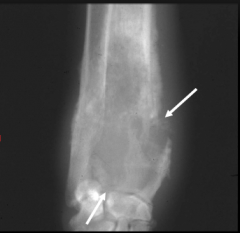
|
cortical disruption
|
aggressive
permeative amorphous periosteal rxn soft tissues are thickened |
|

|
cortical disruption
|
aggressive
cortex destroyed at multiple spots |
|
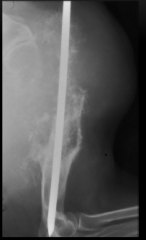
|
complete cortical disruption
|
aggressive
|
|
|
differentials for aggressive bone leasions
|
neoplasia
osteomyeltitis |
biopsy required to distinguish
|
|
|
types of primary bone neoplasia
|
1) Osteosarcoma
2) Chondrosarcoma -fibrosarcoma -hemangiosarcoma -lymphoma |
|
|
|
causes of osteomyelitis
|
1) fungal infection
- coccidiomycosis - histoplasmosis - blastomycosis 2) bacterial infection - implant associated - penetrating injury - septicemia |
|
|
|
Osteosarcoma
|
• Most common primary bone neoplasm in dogs and cats
• Metaphyses, away from the elbow • Any bone |
• Can be primarily lytic, primarily proliferative, or mixed lytic and proliferative
• Pathologic fractures |
|
|
Fungal Osteomyelitis
|
• Permeated lysis, long zone, cortical destruction, soft tissue swelling
|
|
|
|
Bacterial Osteomyelitis
|
• Usually secondary to surgery/ surgical implant/trauma/wound
• Much less common than fungal in small animals • More common in foals and calves |
• Exuberant proliferative, chronic reactive
• Mineralization and new bone formation • Sequestrums can occur |
|
|
Metastatic Sarcoma
|
Polyostotic lesions
|
Cortical destructions
|
|
|
probability of cancer vs infection
|
dogs with bone neoplasia not systemically ill.
those with fungal infection are |
|
|
|
primary bone neoplasia
|
solitary metaphyseal aggressive bone lesion in dogs or cats
- should be considered a primary bone neoplasm until proven otherwise |
|
|
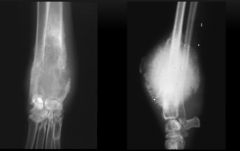
|
osteosarcoma
- primarily lytic - primarily proliferative |
|
|
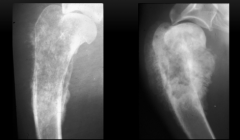
|
osteosarcoma
- mixed lytic and proliferative |
|
|
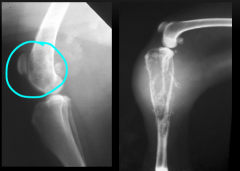
|
osteosarcoma
|
|
|
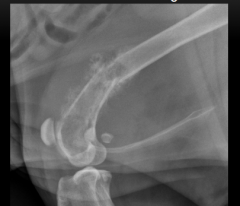
|
osteosarcoma with pathologic fracture
|
permeative palisading to amorphus
|
|
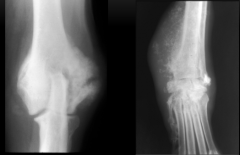
|
chondrosarcoma
|
can't distinguish from osteosarcoma
|
|
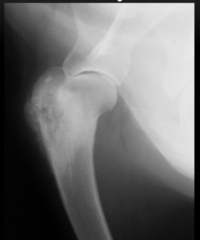
|
fungal osteomyelitis
|
cocidioidomyscosis
|
|
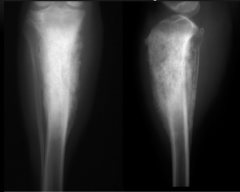
|
fungal osteomyelitis
|
coccidiodomycosis
|
|
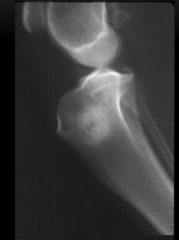
|
fungal osteomyeltitis
coccidiomycosis |

|
|

|
fungal osteomyelitis
blastomycosis |
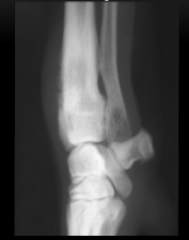
|
|
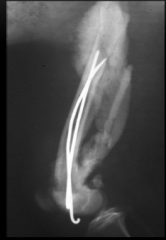
|
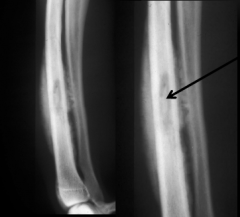
bacterial osteomyelitis
sequestrum |
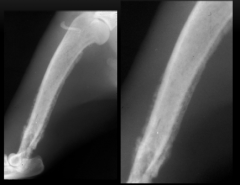
sharply marginated bone fragment surrounded by lucent halo
surrounded by sclerotic bone (involucrum) may or may not be septic |
|
|
polyostotic aggressive bone lesions
|
metastatic neoplasia
- carcinomas, osteosarcoma mycotic (fungal) osteomyelitis |
|
|

|
polyostotic lesions: metastatic sarcoma
|
|
|
|
Hypertrophic Osteopathy (HO)
|
• Secondary to a mass in the thoracic cavity (or abdominal or bladder mass)
• Bilateral, symmetrical • Starting point = abaxial digits • Resolves after mass removal |
• Periosteal proliferation of appendicular long bones
• Palisading/speculated • Begins distally, proceeds proximally • Soft tissue swelling of limb • Multiple bones affected |
|
|
Hepatozoonosis
|
• Systemic infection from protozoa
- systemic illness |
• Periosteal proliferation on bones
• Usually smooth lamellar, can be irregular |
|
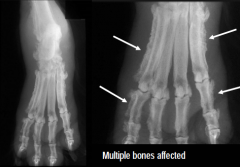
|
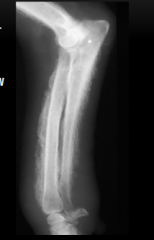
|
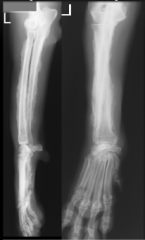
Hypertrophic osteopathy
|
|
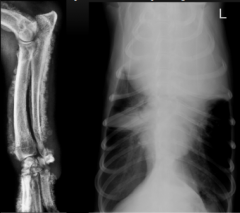
|
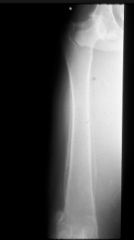
|
hypertrophic osteopathy
|
|
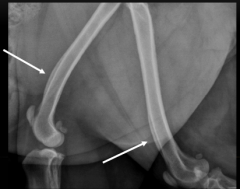
|

|
Hepatozoonosis
|

